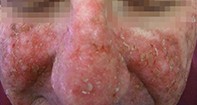Peer Reviewed
Feature Article Dermatology
Management of actinic keratosis
Abstract
There are many different treatments available for patients with actinic keratosis. Choosing the correct treatment regimen and being aware of its limitations can reduce the burden of disease and help to prevent squamous cell carcinoma.
Key Points
- Actinic keratosis often occurs during and after the midlife stage and is primarily caused by prolonged exposure to ultraviolet radiation. Clinical features of this condition include lesional hyperkeratoses, often with underlying inflammation and occasional hyperpigmentation.
- Actinic keratoses are well recognised potential precursors of squamous cell carcinomas.
- There are many different treatments available for patients with actinic keratosis. These include topical retinoids and keratolytics, topical 5-fluorouracil, imiquimod and diclofenac sodium 3% gel, cryotherapy, photodynamic therapy, chemical peels, curettage and electrodessication, facial resurfacing and radiotherapy.
- Referral of patients to a dermatologist should be considered if a decision on the most appropriate treatment is difficult to make, a treatment that is indicated is unavailable to the GP or a patient does not respond to therapy.
Purchase the PDF version of this article
Already a subscriber? Login here.

